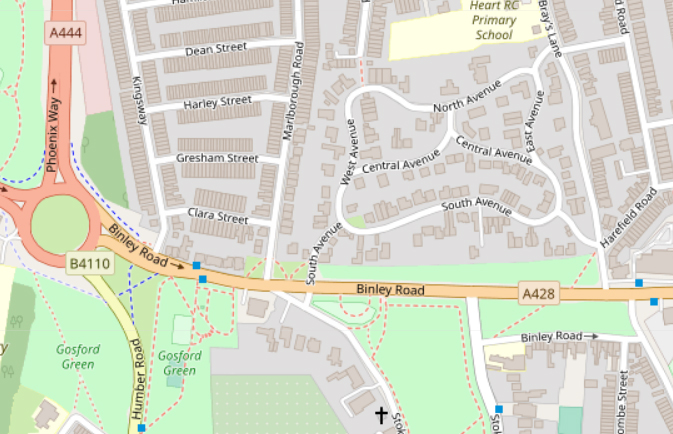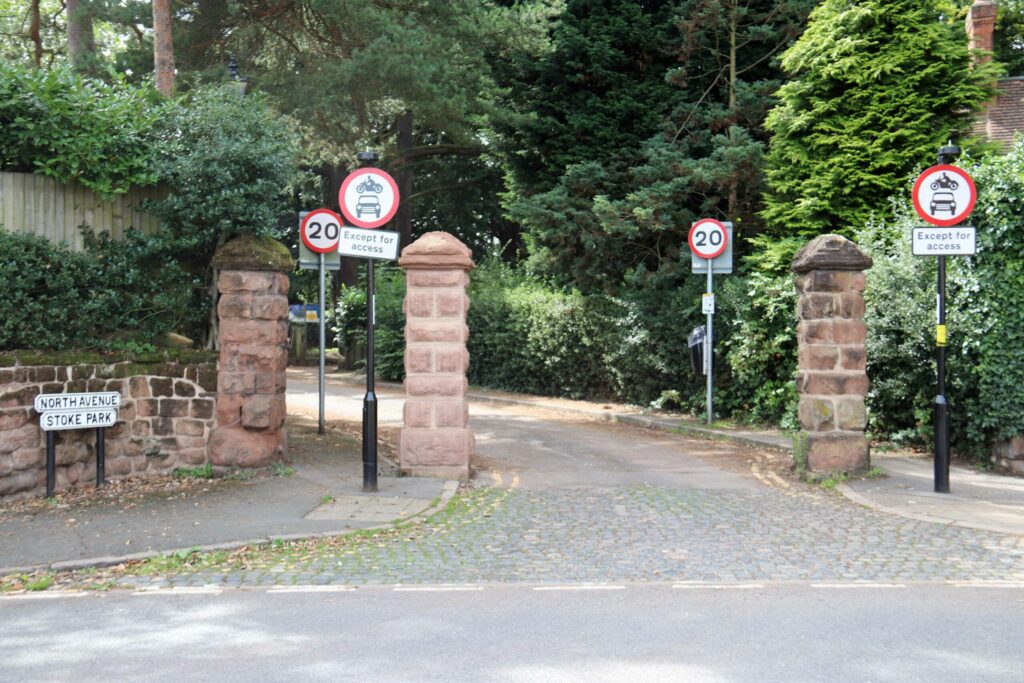Today we have the twelfth episode of Peter Walter’s series of lockdown walks “being a compendium of idle facts, hidden places and meaningless historiana gathered on walks within easy striding distance of the writer’s abode – and beyond”.

Hedges and defensive fencing now hide some of the details, but the houses that look out over Binley Road from South Avenue were clearly built to impress.
This is the public face of Stoke Park, a pocket-sized enclave of Victorian good taste as the city heads out east. Developed from the 1860s, it initially appealed to retiring servants of Empire, home from the plains and the hills in search of cooler weather. And its leafy avenues might still have something of the atmosphere of a cantonment.

Further along the road into town stands Jabet’s Ash, the latest tree to bear that title. It’s a handsome specimen too, its appeal somewhat diminished by the ugly mess that currently fills the railed-off enclosure in which it stands.
Who was Jabet, or was the name merely, as some have suggested, a corruption of the word gibbet? We’ll probably never know, but it was clearly important as a rendezvous point in times past. In April 1603 the mayor and aldermen, arrayed in their finest scarlet, met Princess Elizabeth, eldest daughter of James I, here as she processed into Coventry from her childhood home at Coombe. It’s hard to imagine such a stately scene now, as the Binley Road changes down for the North-south Road roundabout, a sweaty meeting of roads that has all the well-mannered qualities of the fairground dodgems.
Jabet’s Ash first appears in the written record during the reign of Richard II, and Richard himself might even have ridden past it as he turned up for the Duel That Never Was on nearby Gosford Green, between his mate Thomas Mowbray in the red corner (wearing crimson velvet embroidered with silver lions and mulberries) and his cousin Henry Bolingbroke in the blue corner (blue and green velvet embroidered with swans and antelopes).
It all looks so different now. There’s no sign of the ten thousand knights the king was said to have brought with him and Gosford Green is a lot smaller these days, cut through by the loop railway line, constructed in 1914 to service new industry and now hoping for a new career as a linear park.
As long as they call it that. As a stranger, it can be difficult in this landscape of one grassy expanse after another to know at any one moment if you’re on a park or a green. Gosford Park has a dell with a sandstone rockery. Stoke Green has a superb Green Man carving etched into an old tree and an avenue of new trees intend to replace its trademark horse chestnuts, said to be dying from a disease but looking magnificent in the May sunshine.
Along the Binley Road edge of the green is a children’s playground, once a horse pool where carters used to pause to give old Dobbin a drink and tighten up the cart wheels, and somewhere across the road was Stoke racecourse, where the horsepower was a good deal more lively. In March 1834, ten thousand people turned up to watch, among them plenty of ‘prigs’ (thieves) and ‘beaks’ (policemen) to catch them with their hands in other people’s pockets. Needless to say, the raffish racing fraternity was long gone by the time Stoke Park was ready for its first residents.
